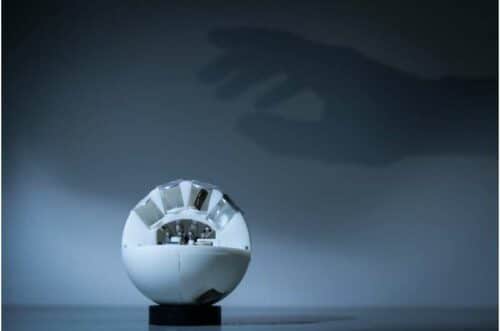Researchers from Westlake University and other universities have developed a haptic device partly inspired by the Asian paper-folding art of origami to enhance virtual experiences.

Over the past decade, there has been a remarkable advancement in the performance and authenticity of virtual reality (VR) technology. This progress has opened up unprecedented possibilities for users to fully immerse themselves in digital experiences that were previously out of reach. VR technology will probably continue to undergo further evolution in the coming years, incorporating enhanced features and components to engage all five senses.
Researchers at Westlake University, the Westlake Institute for Advanced Study and other universities in China have developed an innovative haptic device. This device has the potential to greatly enhance the fidelity and realism of virtual experiences. The team aimed to create a haptic device using origami inspiration, enabling users to feel object stiffness in virtual environments.
The origami-based curved device enables users to experience realistic tactile sensations, mimicking the touch of various real-life objects. It accurately replicates the softness, stiffness, and even positive or negative tactile feedback. Unlike previous haptic devices, this system facilitates active interaction with virtual objects, providing immersive touch experiences instead of passive tactile sensations. The device seamlessly synchronizes with targeted VR content, delivering precisely timed tactile feedback that aligns with users’ interactions in different objects or environments. It not only accurately replicates the sensations of touching objects with varying hardness or softness but also enables users to experience the sensation of crushing.
The focal element of the system comprises a curved origami panel. To dynamically modify the stiffness in sync with the VR/AR environments, motors are employed to adjust the angles between the origami panels. This grants what we term ‘active mechanical sensation.’ The researchers have conducted initial tests to evaluate the effectiveness of their device in generating immersive tactile experiences. The results indicate that their device surpassed other existing haptic devices that predominantly rely on vibration for tactile sensations.
In the future, the distinctive origami-based design holds the potential to propel the performance of VR technology to new heights. Meanwhile, the team is further refining their device to faithfully replicate a broader range of tactile sensations.
Reference: Zhuang Zhang et al, Active mechanical haptics with high-fidelity perceptions for immersive virtual reality, Nature Machine Intelligence (2023). DOI: 10.1038/s42256-023-00671-z







